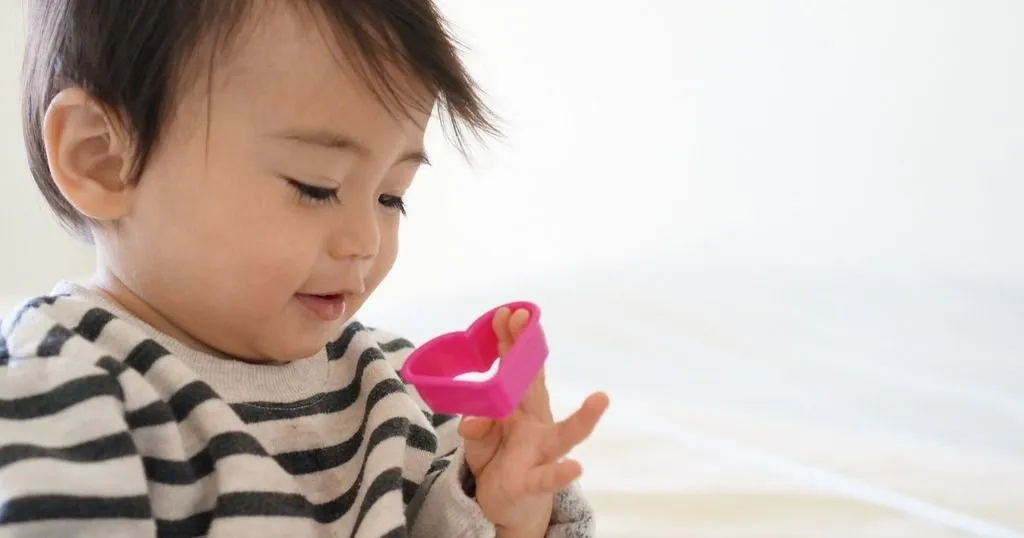Observing and analyzing repetitive movements in infants to detect autism
To examine if a specific repertoire of repetitive movements was present in children with autism, researchers used home videos to code the behaviors of the infants.
Posted by
Published on
Thu 18 Mar. 2021
Topics
| Autism | Coding Behavior | Repetitive Behavior | The Observer XT | Child Development | Developmental Psychology | Infants | Developmental Disorder |

Making the same movement multiple times, or making repetitive movements, is an important step in the development of a newborn child. In the first year of life, an infant learns how to use his or her arms, legs, mouth, hands, and fingers and discovers a wealth of possibilities.
In the beginning, their movements are reflexes, but soon they develop into conscious, voluntary movements. Now, the infant really wants to move his or her hand to the toy and grab it. Or, the infant consciously waves repeatedly to his or her dear grandmother.
Repetitive movements and motor development
Repeating these movements is typical for motor development; it lays the foundation for the ability to adopt the acquired repertoire of movements in order to function properly and to expand variability. However, an increased frequency of repetitive movements has been widely described in neurodevelopmental disorders as well.
One of the core symptoms of Autism Spectrum Disorder (ASD) is the frequency and persistence of repetitive and stereotyped movements during toddlerhood, together with restricted interests and activities. Evidence for this is mainly found in studies with infants ages 1 year and older.
FREE WHITE PAPER: Autism research
Download the free White paper to learn how and why observational research methods are used in autism research.
- Why observe behavior
- How to observe behavior in a structured way
- What research tools are available
Using home videos to detect early signs of autism
The purpose of the study of Purpura et al. was to verify if a higher frequency of repetitive movements (described through their rate and duration) could differentiate infants with ASD from infants with Developmental Delay (DD) and Typical Development (TD), analyzing the age range between six and 12 months. In addition, they described the repertoire of these movements analyzing both the body parts involved and their symmetry.
The researchers conducted a retrospective analysis of video clips taken from home videos recorded by parents in a sample of 30 children equally distributed among three groups. The groups were comprised of 10 infants with ASD, 10 with DD, and 10 with TD. Home videos have the advantage to capture infants in their natural environments and the behaviors that regularly occur within them.
Children with ASD and DD were diagnosed at an age range between three and four years. At the time of diagnosis, parents were asked to provide their home videos. The videos showed the children's behaviors when they were six – 12 months old, long before they had been diagnosed with autism, to examine if a specific repertoire of repetitive movements was present earlier in life.
Coding behaviors to analyze repetitive movements
The research team first extracted all the sequences in the video clips in which the entire body of the child was clearly visible. A total of 148 video clips lasting at least one minute and a total of 10 minutes of video clips for each child was used for coding.
To code the behaviors of the infants, the team set up a coding scheme for the Repetitive Movement Episodes (RMEs) considering head, mouth and tongue, arms, hands, lower limbs, and torso as parts of the infant's body potentially involved in repetitive movements. The selected video clips were randomly assigned to two coders who were trained to use The Observer XT and to detect the RMEs.
The rate per minute and percentage duration of RMEs, which were automatically generated by The Observer XT, proved to be a useful measure for the occurrence and the prevalence of target behaviors within observations with a variable duration.
FREE TRIAL: Try The Observer XT yourself!
Request a free trial and see for yourself how easy behavioral research can be!
- Work faster
- Reduce costs
- Get better data
Bilateral repetitive movements as a specific risk marker for ASD
The analysis of the observations revealed that frequencies and durations of bilateral RMEs with arms, hands, fingers, and lower limbs were significantly higher in ASD than in the other two groups. In addition, an adequate diagnostic accuracy of those RMEs was found as well. No significant difference was found between the distributions of unilateral RMEs between ASD and DD/TD.
The presence of an ASD-specific pattern of bilateral repetitive movements at this early age was indicated by this study, although some limitations, such as the study design and the small sample size, cause the results to be preliminary in nature. The researchers point out that greater attention should be given to repetitive movements as specific risk markers for an early diagnosis of ASD.
Perhaps, when diagnosis at this early age is possible, therapeutic behavioral interventions can start early and might provide a more effective therapy for potentially autistic children.
Tools to study children's development
The behavior of children includes not only body language, but also facial expressions, eye gaze and psychophysiological responses. Measuring these will help answer your research questions.
In the Noldus Webinar about Research in Developmental Psychology, we will explain how our research tools can be used to study the behavior of children both in a naturalistic and a laboratory setting. The webinar is available on demand!
References
Purpura, G.; Costanzo, V.; Chericoni, N.; Puopolo, M.; Scattoni, M.L.; Muratori, F. & Apicella, F. (2017). Bilateral Patterns of Repetitive Movements in 6- to 12-Month-Old Infants with Autism Spectrum Disorders. Frontiers in Psychology, 8, 1168. Doi: 10.3389/fpsyg.2017.01168
Related Posts

Understanding the micro-dynamics of couples’ interactions

Two examples of on-site observational studies with older persons
